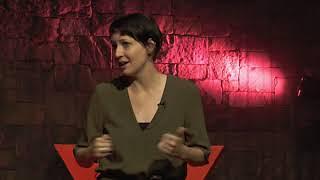- Teaching Clicks
- Posts
- Can We Learn Through Our Dreams?
Can We Learn Through Our Dreams?
Unlocking the mysteries of dreams: How they shape our understanding

Can We Learn Through Our Dreams?
Kekulé’s discovery of the ring structure of benzene. Srinivasa Ramanujan’s 3,000 mathematical theorems. Larry Page’s inspiration for the first Google algorithm.
Each of these revelations was inspired by a dream the person remembered on waking.
Today we’ll explore the fascinating and often enigmatic world of dreams. Dreams are a universal experience, yet it is easy for us to overlook their role in learning and behavior acquisition.
Whether by sudden insights or feelings that compound into knowledge over time, dreaming is an opportunity to explore our own learning landscape.
One Tufts’ scientist believes dreams play a large role in keeping our brains “fit” and ready to learn. Or could dreams be partly how we evolve as a species?
Studies promote the idea that dreams are associated with learning, particularly the memory encoding process. And lucid dreams, dreams in which you know you are dreaming, have been imbued with the ability to do everything from reduce anxiety to improve your performance.
Jung's dream theory: Exploring the collective unconscious
Swiss psychiatrist Carl Jung emphasized the importance of analyzing dream symbols to uncover insights about the dreamer's inner world. Unlike other dream theorists, he didn't believe in a one-size-fits-all interpretation. Instead, he encouraged dreamers to engage in a process of active imagination to understand the personal meaning behind their dream symbols.
By analyzing our dreams, we embark on a path of self-discovery and learning. Jung felt that the symbols in our dreams are like signposts, guiding us towards greater self-awareness and personal growth. Some common dream symbols in Jung's theory include snakes (representing transformation) and houses (symbolizing different aspects of the self).

Jungian dream analysis: Symbols and self-discovery
Jung regarded dreams as gateways to the subconscious mind, a realm that holds our deepest thoughts, feelings, and experiences. One of his most significant contributions to dream psychology is the concept of the collective unconscious. This idea posits that we all share a repository of universal memories, symbols, and archetypes. Jung believed that our dreams tap into the collective unconscious, allowing us to draw on these shared symbols and experiences.
But how do dreams influence learning? In Jung's theory, dreams also incorporate archetypes, which are powerful, recurring images that reflect universal themes of human experience. Examples of archetypes include the wise old man, the mother figure, or the hero's journey. By connecting with these archetypes in our dreams, we engage in a process of learning, self-discovery, and personal growth.

Do dreams help us learn? The role of dreaming in learning and memory
There are many scientific theories of dreams that suggest how they might be related to learning. These range from dreams being a form of cognitive organization and memory consolidation to serving evolutionary functions that could indirectly aid in learning and adaptation:
Activation-Synthesis Hypothesis: Proposed by J. Allan Hobson and Robert McCarley, this theory suggests that dreams are a byproduct of the brain trying to make sense of random neural activity during sleep. While this theory doesn’t ascribe meaning to dreams, it's interesting to consider how this random activation might interact with memory consolidation, affecting learning.
Information-Processing Theory: This theory posits that dreams are a way for the brain to process, sort, and store the day's experiences and emotions. It's akin to cognitive housekeeping. This theory aligns with the concept that sleep, and by extension dreaming, plays a crucial role in learning and memory consolidation.
Memory Consolidation Theory: Building on the information-processing view, this theory suggests that dreaming is a part of the process whereby the brain consolidates and stabilizes memories. According to this theory, the content of dreams reflects the interplay of new information and existing knowledge, which could help with learning and problem-solving.
Threat Simulation Theory: Proposed by Antti Revonsuo, this theory suggests that dreaming serves an evolutionary function by simulating threatening events and practicing how to deal with them. While this theory focuses more on survival skills, it suggests that dreams can be a space for mental rehearsal, which can solidify learning, especially around challenging or stressful situations.
Continual-Activation Theory: This theory proposes that dreams result from the brain's need to constantly consolidate and create long-term memories from short-term memory storage. It suggests that dreams are a reflection of this memory processing, which is crucial for learning and retaining information.
More on the role of dreaming in learning:
“Can lucid dreaming help us understand consciousness?”, Nov. 2021, The Guardian
Man and His Symbols, Carl G. Jung
“A New Theory for Why We Dream,” Tufts Now, Feb. 2021

Do you enjoy an intriguing world where dreams and learning intersect? Teaching Clicks is a newsletter for the curious mind. Join me to explore the intersection of psychology and education. Whether you're a professional or just fascinated by learning and behavior, Teaching Clicks is your monthly gateway to understanding and inspiration. Subscribe now!
